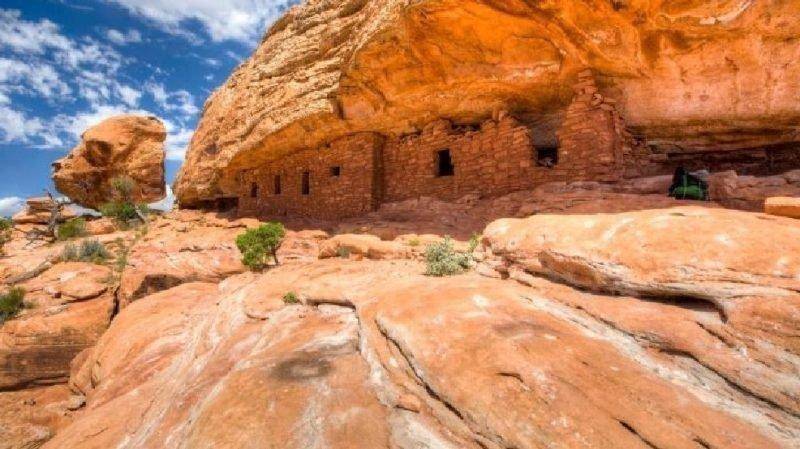By Julie Johansen
Using the 1906 Antiquities Act, President Barrack Obama created the Bears Ears National Monument on Dec. 28. This has once again created much discussion and even controversy regarding the two national monuments in Utah, which have become key points over the use of public lands in the Western United States.
Utah Governor Gary Herbert commented that the new national administration can do one of the following things with regards to the monuments in Utah: they can repeal, negate or establish another one.
“It is a very complex issue,” Governor Herbert said. “As the state of Utah, we can continue to negotiate and try to reflect the will of the people; we can legislate, which is the best way, or we can enter in litigation.”
Herbert continued that some areas need protection but he feels that the monument designation is not the best way. The Grand Staircase Escalante National Monument is 1.9 million acres and Bears Ears is 1.4 million acres. They are both oversized. We need to protect 200,000 acres. Herbert said that some say we are trying to privatize public land in Utah and that is not so. We just want to have more say about what happens in our own backyard. We would like the federal government to not do it to us but with us.
The Bears Ears area is an important site for Native American tribes. They use this area for hunting, fishing, ceremonies and collecting traditional plants for medicinal use. Within the boundaries of this monument are Natural Bridges, Abajo Mountains, Cedar Mesa, the popular Indian Creek climbing area, the Bears Ears Buttes and thousands of archeological artifacts, including cave dwellings.
David Filfred, a Navajo Nation Council Delegate, was quoted as saying, “For the first time in history, a President has used the Antiquities Act to honor the request of Tribal Nations to protect sacred sites.” However, some members of the Navajo National gathered with the governor to speak against a national monument.
The monument designation allows for hunting, fishing and grazing permits. Existing permits for oil and gas exploration, mining and utility corridors are not supposed to change, but no new permits will be allowed in this area. In 1996 when President Clinton designated the largest area of a national monument in the United States, The Grand Staircase, Andalex was into the permitting process.
According to Commissioners Whitney and Pollock, from Beaver and Garfield counties, respectively, this was ceased and leaves the biggest pocket of high quality coal, 62 million tons, in the United States untouched. This would have amounted to over 1,000 jobs. This has been a big economic hurt to these areas and the entire state. Escalante High School was declared in an economic state of emergency as it dropped from 142 students in 1996 to 51 in 2016.
Many feel that the Antiquities Act has been used inappropriately, that it was designed to protect much smaller parcels of land and are calling for litigation or at least legislation to take away power from just one stroke of a pen that affects millions. Utah Attorney General Sean Reyes told reporters on Jan. 2 that Utah plans to file a lawsuit. Alaska and Wyoming have legislated to protect their states from these designations and many lawmakers feel that this is the direction to take. They state that there is now a two-year window of opportunity with a new congress and new administration to protect lands for future generations.

